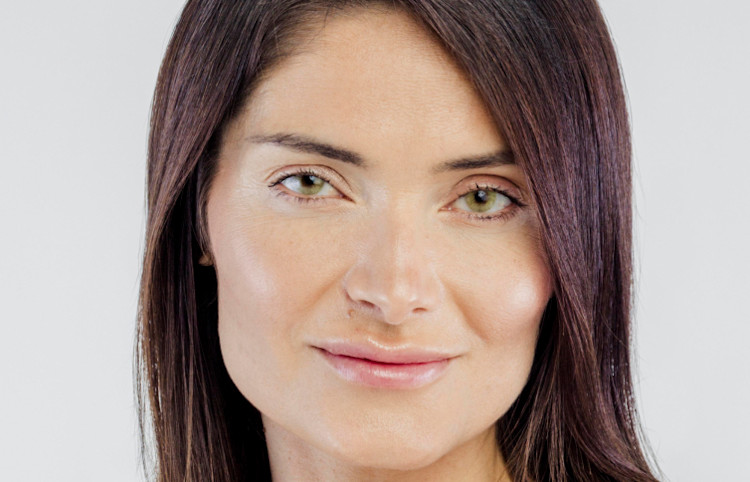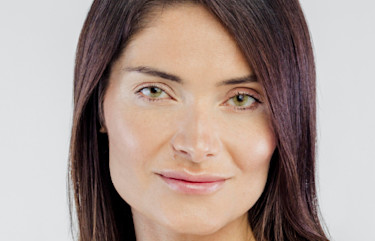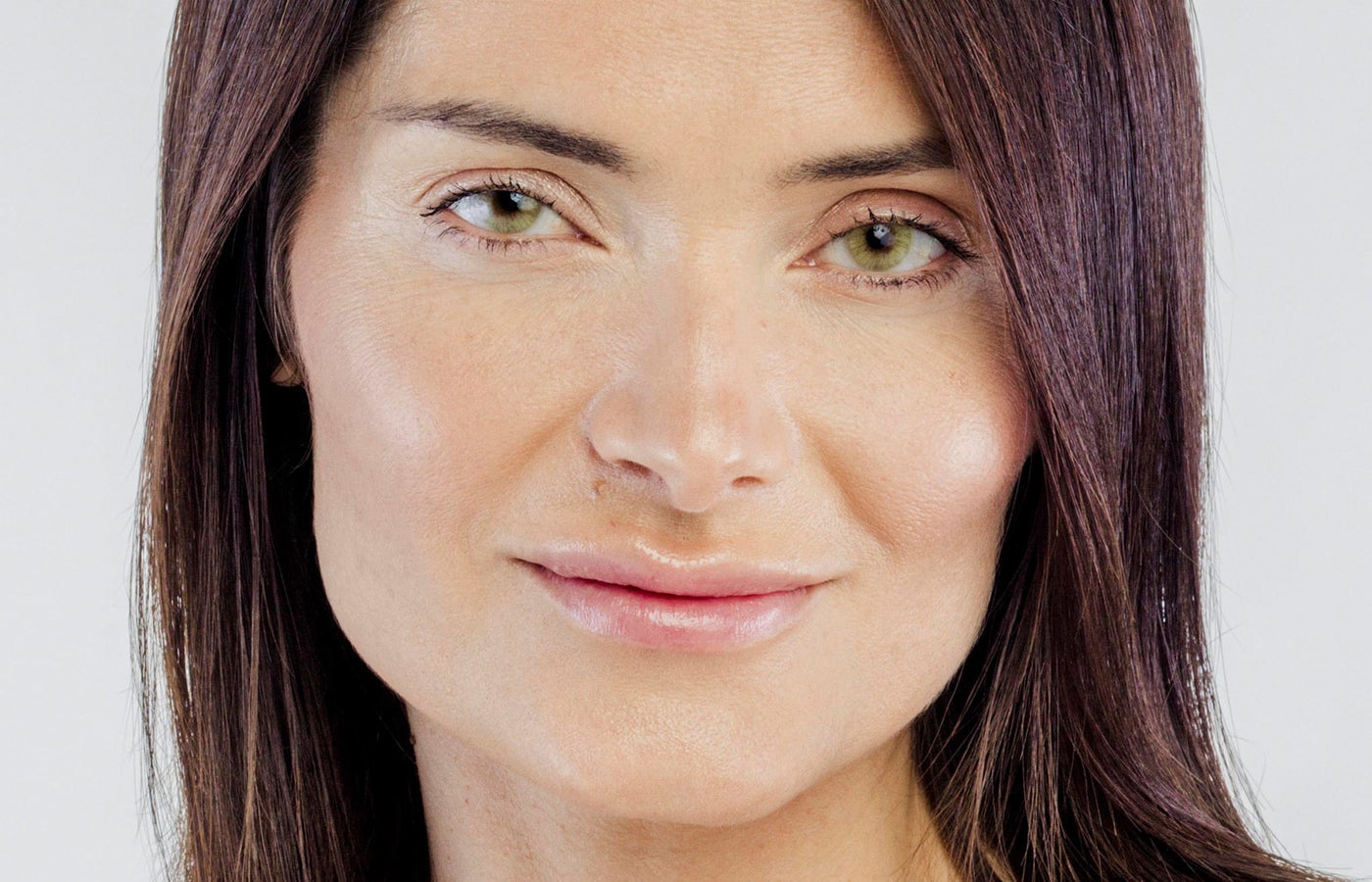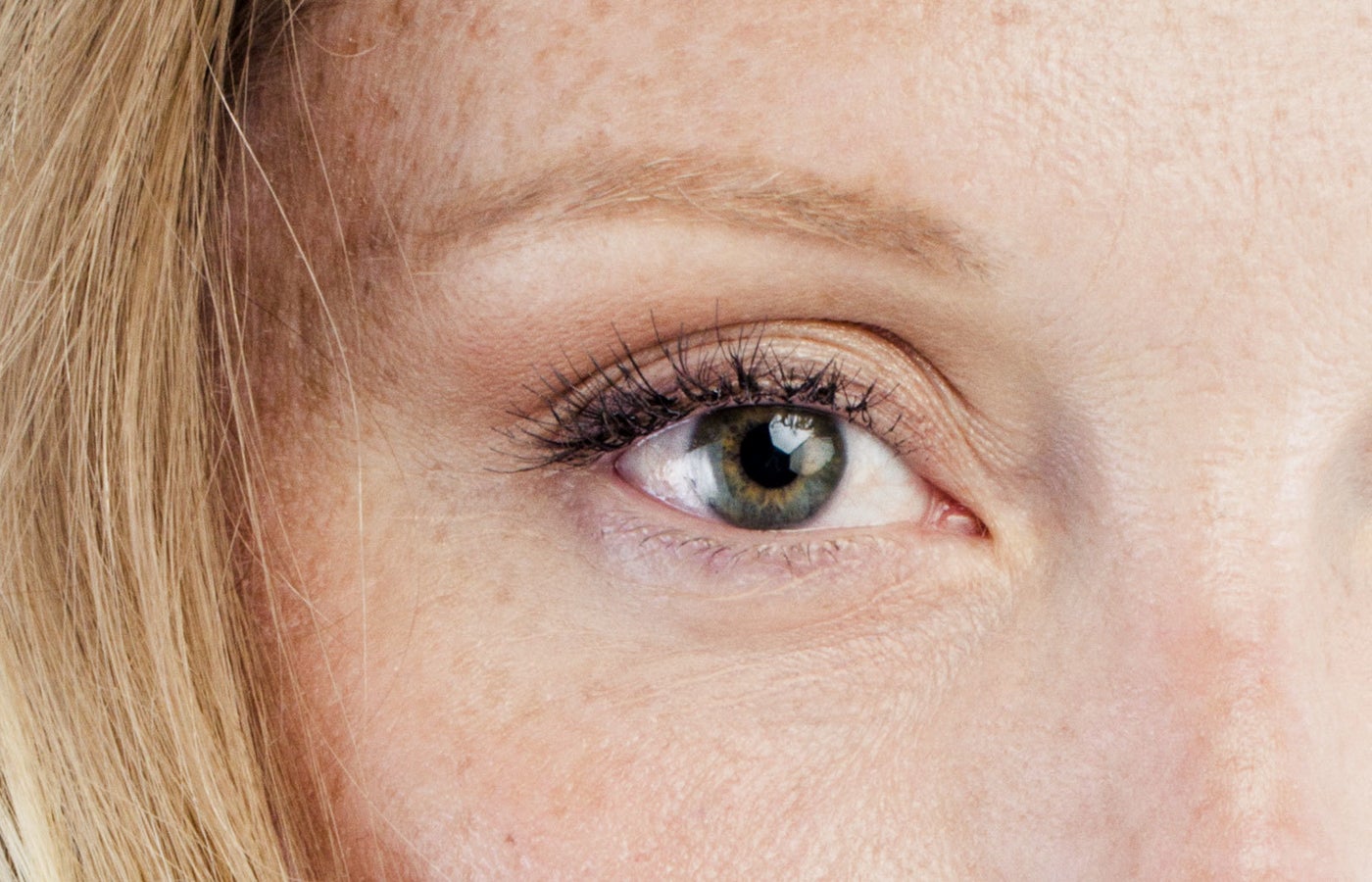Dark Circles Under Eyes
Even with the best concealer, dark under-eye circles can make you look tired (or older than you are). Luckily, there are temporary and permanent ways to lighten up your under-eyes—learn all about them here.
Even with the best concealer, dark under-eye circles can make you look tired (or older than you are). Luckily, there are temporary and permanent ways to lighten up your under-eyes—learn all about them here.
What causes it
Top treatments
Other options to consider
Skin-care solutions


Dark circles—which can sometimes appear as blue or purple discoloration under the eyes—can develop for anyone, at any age. Due to a variety of factors, this bruised appearance can sometimes be only temporary; other times, they’re more permanent. However, they're more likely to develop more permanently as we age.
Related: The Ultimate Guide to Bigger, Brighter Looking Eyes—From Makeup to Medical Treatments
Dark eye circles have many causes far beyond a lack of sleep. Usually, “dark circles are caused by the unique optical properties of very thin skin,” says Beverly Hills, California, oculoplastic surgeon Dr. Kenneth Steinsapir. “Just under the skin is a thin red muscle called the orbicularis oculi. The light that penetrates the skin is absorbed by this muscle and makes the area look darker.”
At only half a millimeter thick, eyelid skin can also reveal the underlying blood vessels.
- Genetics may mean you’ve inherited deep tear troughs or hollows under your eyes.
- Excessive pigment is especially common in people with olive or brown skin. It can be exacerbated by sun exposure.
- Aging and the fat loss or sagging that comes with it can cause more hollowing.
- Allergies can trigger inflammation that expands the blood vessels under the eyes, making the area look purplish.
- Excess fat can also cause puffiness that casts shadows.
There’s often a combination of reasons for dark under-eye circles. Because of this, your doctor may recommend more than one treatment (beyond getting enough sleep).
“No one answer will improve the condition completely,” says Langhorne, Pennsylvania, physician Dr. Deepak Ramesh. “A combination of a quality skin-care regimen and addressing the underlying anatomic factors will give you an optimal result.”
While certain treatments can work wonders for minimizing dark circles under the eyes, it’s important to note that “even with multiple treatment methods, dark circles can only be reduced, not entirely eliminated,” says Dr. Davin Lim, a dermatologist in Brisbane, Australia.
An experienced dermatologist or plastic surgeon can assess the underlying causes of your dark circles and recommend the best eye treatment option, all of which are listed below. (Looking for the best treatments for under-eye bags? Find them here.)
Related: How Much Eyelid Surgery Costs and Whether It’s Worth It, According to 6 Women Who Got the Procedure
- Injectable fillers can temporarily smooth out under-eye depressions and lighten shadows created by hollowness. For the right candidate, they can also camouflage the appearance of under-eye bags. (If puffiness is pronounced, however, filler can sometimes exacerbate the look of bags.) In cases of true hollowing, “using fillers under the eye plumps out the area and makes you look less ‘scooped out,’” says London physician Dr. Uche Aniagwu. The most commonly used plumping fillers—Restylane Silk, Belotero, and Volbella—contain hyaluronic acid (HA). They can be dissolved with the enzyme hyaluronidase, if you don’t like the result or have a complication. Slight bruising and swelling are common side effects that usually resolve after 48 hours. Results with HA fillers last six months to a year or longer. Just keep in mind that if you have dark circles caused by excessive pigment, that effect could be enhanced by fillers. Find doctors who offer injectable fillers
- Chemical peels use an acid solution applied to the skin to speed cell turnover, remove damaged top layers, and boost collagen growth, for a brighter, more even-toned complexion. There’s a risk of discoloration for people with olive or brown skin tones, so a series of light, less aggressive peels is the safest option in these cases.Chemical peels can brighten and tighten the under-eye area. Depending on the type of peel you receive, downtime will vary, and you may need more than one peel for optimal results. Find doctors who offer chemical peels
- Microneedling treatments create controlled micro injuries with tiny needles, which triggers your body’s natural production of collagen and elastin. This thickens the skin over time, disguising the blood vessels and musculature underneath that can appear as discoloration. RF microneedling treatments amp up these results by delivering radiofrequency energy into the skin's deeper layers, heating it in order to create a more potent healing response. This treatment is often combined with PRP (platelet-rich plasma) injections, a concentration of growth factors from your own blood, to further boost collagen production and reduce the transparency of the skin. It’s a quick procedure that requires little downtime and is safe for all skin types—when done by an experienced, qualified provider. Microneedling results can be maintained with follow-up treatments once or twice a year. Find doctors who offer microneedling
- Lower eyelid surgery repositions the fat pad below the eye into the tear trough, to fill in the depression, and removes excess skin that causes under-eye bags. “The dark circles will be less obvious but not totally eliminated,” says Dr. Robert Singer, a plastic surgeon in La Jolla, California. This surgery takes about an hour and is considered safe, with minimal side effects. Swelling should resolve within two weeks, and results typically last 10 to 15 years.While this procedure can reduce dark circles for the right candidate, removing too much fat during a lower blepharoplasty can actually have the opposite effect, resulting in under-eye hollows. A skilled surgeon should be able to avoid this. Find doctors who offer eyelid surgery
- Facial fat transfer harvests fat from one area of your body via liposuction and injects it into the hollows below your eyes in microdroplets. The fat fills in hollows, creating a smoother eye-to-cheek contour that minimizes the appearance of dark circles. It can take up to six months to see the final results from a fat transfer procedure. Results can also be unpredictable: about 50% of the fat won’t survive, so a touch-up treatment is often necessary. There's also the risk of lumps, especially if your provider doesn't have extensive experience with the procedure and a nuanced grasp of under-eye anatomy. Still, transferred fat is the longest-lasting treatment option for restoring volume to a sunken under-eye area. And while the up-front cost can be more than with other treatment options, it can be more cost-effective than temporary solutions, like fillers, in the long run. Find doctors who offer facial fat transfer
- Intense pulsed light (IPL) devices emit a broad wavelength of light that attacks excess pigment in the skin. Several treatments may be needed—and IPL is off-limits to those with skin of color—but recovery time is minimal.
- Laser Genesis is a non-ablative laser that breaks up pigmentation and stimulates new collagen production. It emits short bursts of energy so quickly that the skin’s surface isn’t damaged. This makes it ideal for people with dark skin, who can be more prone to under-eye shadows caused by excess pigmentation. “Laser Genesis has produced dramatic improvement in discoloration in some of my patients, and it is safe for dark skin,” says Dr. Jason Emer, a dermatologic surgeon in West Hollywood, California.
- Pulsed dye lasers, like the Vbeam, selectively target blood vessels that contribute to dark shadows while leaving the surrounding skin undamaged. You may need three or more sessions, see the results you want.
- The Halo laser uses a combination of wavelengths to repair visible discoloration and uneven skin tone on your skin’s surface while also heating the tissue below in order to stimulate collagen production and thicken skin over time. Two to three treatments, spaced at least six to eight weeks apart, are recommended; full results may take up to two months.Halo laser results can last years, but be very wary of this option if you have tanned, olive, or brown skin, because of the risk of hyperpigmentation.
The right skin-care can help diminish the appearance of dark circles.
A powerful form of vitamin A, retinoids, such as prescription Retin-A or Tazorac, can gradually thicken skin and reduce the appearance of dark circles. You’ll need to apply it daily for at least a few months (mixed with a moisturizer, to reduce irritation) in order to see an improvement. (Retinoids are also among the most effective ways to smooth fine lines around the eyes.)
Over-the-counter eye creams that contain retinol can also help, though your results will be less dramatic and take longer to develop. Skin-care products that combine a retinoid with vitamin K, which decreases excess pigment, have been shown in studies to help treat dark under-eye circles.
Hydrating, peptide-enriched products may also help diminish darkness by improving the quality and turgor of the skin, according to a 2016 review of published studies.
Skin-care products that contain a bleaching agent, such as hydroquinone, can improve dark circles that are caused by excess melanin (pigment), but it's not safe to use continuously for more than six months.
The best eye creams contain brightening ingredients like vitamin C, arbutin, and kojic acid. A good option is the BeautyStat Universal C Eye Perfector, which contains 5% vitamin C, to brighten and revitalize the delicate eye area.
It’s also essential to protect your skin from the sun (which stimulates the production of melanin and breaks down collagen) by wearing sunscreen with an SPF of at least 30 every day.
Related: Waking Up Tired Eyes: What Really Goes Into an Eyelid Lift
Updated July 6, 2021




